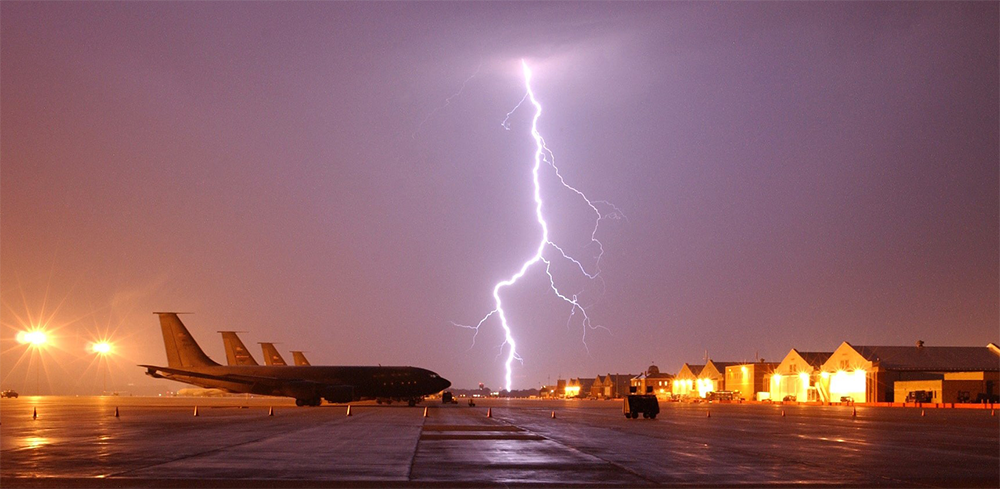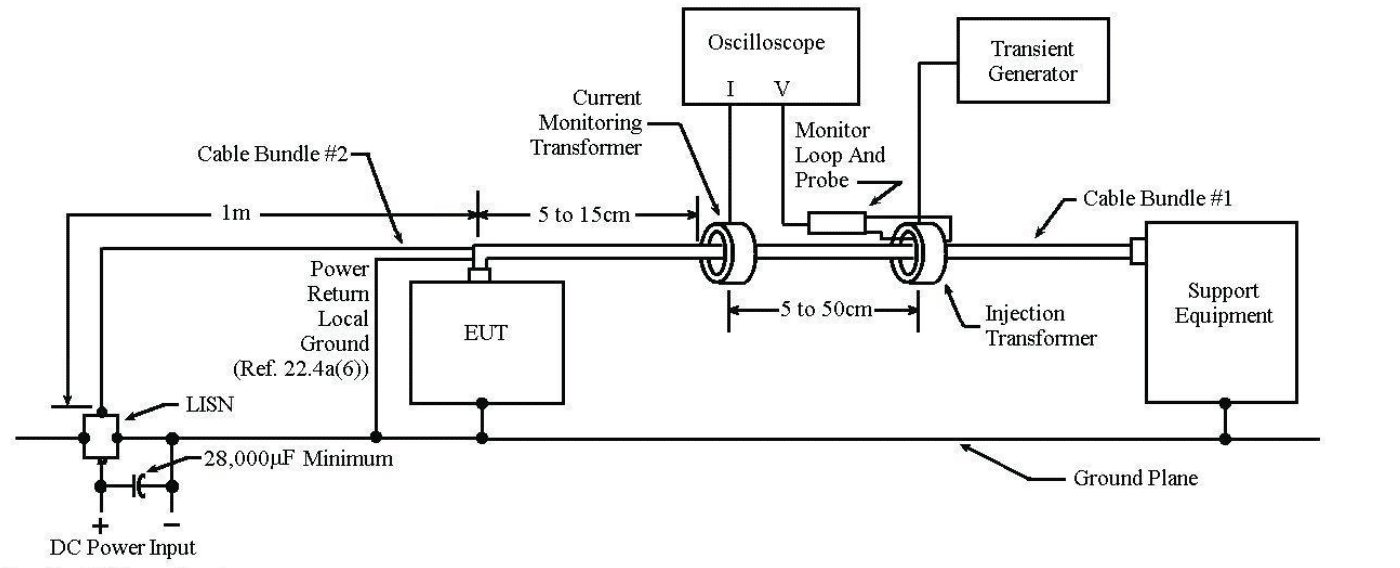
RTCA/DO-160 Section 22 offers test procedures to determine whether the EUT can operate as specified during and/or after various lightning induced transient waveforms are injected into connector pins, interconnecting cables, and power leads using pin injection, and/or cable bundle tests. The pin injection method is normally used to show damage tolerance, while the cable bundle tests are normally used to show upset tolerance.
Pin Injection
During pin injection testing, the EUT is normally powered, so that the circuits being tested are biased as they would be in normal operation. The test level is defined as an open circuit voltage (Voc) with a specified source impedance from the generator.
Cable Bundle Tests
Cable Bundle Tests are performed using either Cable Induction or Ground Injection to couple the transient waveforms into the interconnecting cable bundles and power leads.
The cable induction test method uses an injection probe to induce the transient waveforms into interconnecting cables and power leads. The ground injection method is very similar to the cable induction method, except that the transient waveform is applied between the EUT case and the ground plane.
Cable Bundle tests for RTCA/DO-160 Section 22 may be performed using the Single Stroke method only or using a combination of the Single Stroke, Multiple Stroke, and Multiple Burst methods. The Single Stroke test method is designed to represent the internal aircraft wiring response to the most severe external aircraft lightning strike. The Multiple Stroke test method is designed to represent the induced effects to internal aircraft wiring in response to an external aircraft lightning strike that is composed of a first return stroke immediately followed by multiple return strokes. The Multiple Burst test method is designed to represent the induced effects to internal aircraft wiring in response to an external aircraft lightning strike of a multiple burst nature.
Equipment Categories
RTCA/DO-160 Section 22 category designations consist of five characters that describe the pin and cable test Waveform Sets and test levels.
The 3 Pin Injection test waveforms are grouped together in two Waveform Sets (A & B). The 6 Cable Bundle test waveforms are grouped together in four Single Stroke Waveform Sets (C through F), and four combined Single Stroke and Multiple Stroke (G through K), and two Multiple Burst Waveform Sets (L& M).
RTCA/DO-160 provides standard procedures and environmental test criteria for testing airborne equipment for the entire spectrum of aircraft from light, general aviation aircraft and helicopters through the "jumbo jets" and SST categories of aircraft. The tests outlined in this standard are performed to meet FAA and international regulations for electrical and electronic equipment installed on commercial aircraft.
RTCA/DO-160 G is the current version of this standard. Coordinated with EUROCAE, RTCA/DO-160G and EUROCAE/ED-14G are identically worded. DO-160G is recognized by the International Organization for Standardization (ISO) as de facto international standard ISO-7137.
